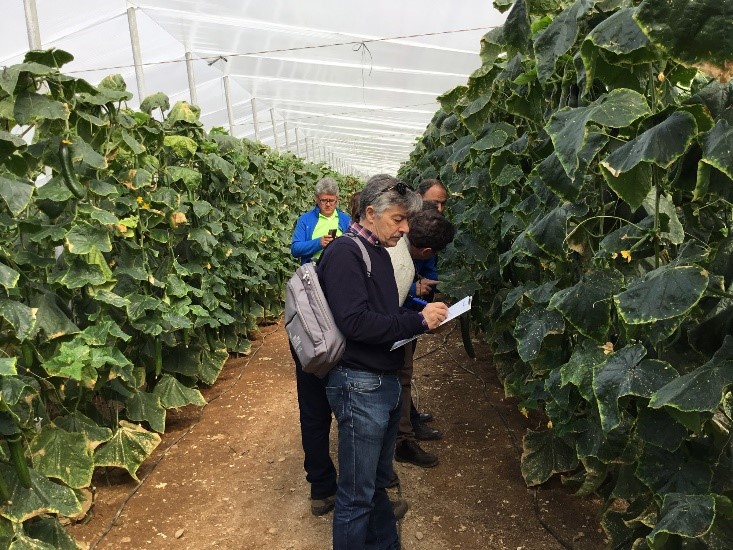Fertilizer Demand Recovering
Despite world economic activity suffering major setbacks in 2011, the global fertilizer consumption is expected to grow 2.5% to 181.4 million metric tons (Mt) in 2012/13.
Tight market conditions for maize and oilseeds provided strong incentives for farmers to increase productivity. As a result, world fertilizer demand is expected to be up by 2.8% in 2011/12, and by another 2.5% in 2012/13, to reach 181 Mt of nutrients, including nitrogen, phosphate and potassium.
That trend is expected to continue through at least 2016/17, according to a report by Patrick Heffer, Director of the IFA Agriculture Committee, and Michel Prud’homme, Director of the IFA Production and International Trade Committee of the International Fertilizer Association.
Demand for fertilizer has been driven by attractive prices for agricultural commodities. Nitrogen is expected to grow 4% and phosphorous 1.4% during 2011/12. Potassium is also expected to rise, but only by 0.4% to 27.7 Mt.
The 2012/13 campaign is expected to mark the complete rebound from the 2007/08, when most of the world saw a drop in demand. World fertilizer demand is projected to reach 192.8 Mt by 2016/17.
South Asia has been the main driver of the rebound with an estimated 8.1 Mt growth. That accounts for about 60% of the global net increase, according to Heffer.
“South Asia, together with Eastern Europe, was the only region not to record a drop in demand in 2008,” Heffer says. “This was explained by the fertilizer subsidy scheme implemented in India, which protected Indian farmers from fertilizer price fluctuations during that period.”
East Asia and Latin America are expected to show the biggest increases in nutrient use in the medium term.
“The outlook is much more positive in emerging economies, driven by fast expansion of agricultural production,” Heffer says. “Agricultural production in Western Europe is relatively stagnant, and fertilizer application rates are not seen recovering in the medium term, despite worrying negative balances for phosphorus and potassium in the main grain-producing areas,” Heffer says.
He adds: “This is not sustainable over the long term, but the Western European market could remain depressed in the next five years. The outlook is much more positive in emerging economies, driven by fast expansion of agricultural production.”
Maturing markets, such as those in North America, respond to different factors than those of some Asian markets.
“Fertilizer demand would increase in all regions but North America, where declining crop prices compared to last year are expected to lead to lower application rates,” Heffer and Prud’homme indicated in the report.
Price is not an issue for Asian farmers. Their production levels are driven by different factors.
“Contrary to North American growers, Asian farmers are not very responsive to international prices,” Heffer says. “Nevertheless, they increase production in response to incentives provided by the government in the objective of ensuring food security. For instance, the Chinese government increases subsidies to Chinese farmers to produce more cereals.”
While Asia will help drive demand for the next several years, other parts of the world could have a larger impact.
“Asia’s weight in regard to global growth is progressively declining, while Latin America is seen as reinforcing its position as an engine of future expansion, according to the IFA’s “Medium-Term Fertilizer Outlook 2012-2016” report released in June. “Demand is anticipated to rise firmly in Eastern Europe and Central Asia, as well as in Africa. In volume terms, East Asia, South Asia and Latin America together would account for three-quarters of the increase in world demand during the next five years.”
Policy and Volatility
While the outlook is good for growth in the nutrient market, a number of factors could have an impact on those projections. Volatility remains a challenge, and decision makers are looking at options to remove some of that uncertainty.
“Policy leaders at the G20, FAO, OECD all highlight the need to reduce agricultural price volatility and therefore to reduce risks associated with agricultural investments,” Heffer says. Putting in place new mechanisms aimed at reducing volatility would encourage farmers to invest more in productivity boosters, such as fertilizers, seeds of improved varieties, he explains.
“More transparency in the agricultural commodity markets would already significantly improve the current situation,” Heffer adds.
Several other factors including potential revisions to the US Farm Bill and EU Common Agricultural Policy and Russia joining the WTO could affect price and demand, but until those scenes are played out, their impact remains unknown.
“The evolution of agricultural commodity prices has been mainly driven by tight market conditions,” says Heffer. “Under such conditions, markets react strongly to any weather-related crop shortfall or to any trade restriction. Speculation can exacerbate the response. The evolution of the world economic context is the main factor that could impact the outlook.”
According to Heffer and Prud’homme’s report, “the medium-term agricultural outlook is expected to stimulate fertilizer demand, but high volatility could result in significant year-on-year variations.”
The long-term outlook suggests that some of the increase in fertilizer demand could diminish as the largest consuming countries reach maturity.
“This refers mostly to China and, to a lesser extent, India,” Heffer says.
China uses already relatively high fertilizer application rates, with significant differences between regions and cropping systems. There is little room to further increase demand for N and P fertilizers in China and in India. In contrast, fertilization is still unbalanced, to the detriment of potassium and, therefore, the outlook in these two countries points to a stronger growth for K demand relative to demand for N and P fertilizers, he explains.
Supply
According to Prud’homme, the fertilizer industry, on average, operated at close to 95% of effective capacity.
“This showed a quick turnaround in production over 2009-2010, that has led to relatively tight market conditions in 2011,” Prud’homme says. “IFA can’t forecast where this rate will go as it is dictated by future production.”
About half of all fertilizer production projects planned to come on line between 2011 and 2016 have faced delays.
“The main reasons for the delays are technical, as completion and commissioning have taken longer time than expected,” Prud’homme says. “In general, most projects have had an optimistic schedule that, in current economic circumstances, has shown that completion takes longer time.”
Nearly 250 new projects are expected to start in the next five years.
“The bulk of this new capacity is actually under construction, so there will likely be under production in future,” Prud’homme says. “Some of this new capacity is being commissioned or will be during the course of this year and next year.”
Of course, changes to any number of variables could affect projects that are not planned to begin operations for several years.
“Some of this new capacity is still in planning stages, especially for projects that are slated for completion in 2015-16. It is possible that several of these latter projects will be cancelled or further postponed, thus slowing down the progression of capacity and projected supply.”





